Victorian Cemeteries hold a not so comforting, yet vital place in the lives of people. These are the final resting places of the deceased and are often associated with their memories in the minds of the living.
1. Pre-Victorian (Georgian) Cemeteries
The beginning of the 19th century saw some major challenges, for the dead. This was the time when there was a constant rise in the population. This, in turn, had a negative impact on the burials of the dead.
Ill practices like digging of the already buried to accommodate new body, or stealing of the dead bodies, piling up bodies atop one another to make room for new bodies was rampant.
Such activities acted as a catalyst in spreading diseases and unhygienic living conditions. To curb these, an Act was passed in 1831 to allow private Victorian Cemeteries (Magnificent Seven) to open up so as to give the much-deserved burial to the departed. This part of the article discusses a few burial places that were established prior to the Victorian period.
a. Kensal Green Cemetery(1832)
The Kensal Green Cemetery was one of the earliest Victorian Cemeteries established as part of the Magnificent Seven. The design of the cemetery was influenced by Pere Lachaise cemetery, situated in Paris.
William Chadwick was the architect of the cemetery and its architecture is influenced by Greek Revival style. At the entrance of the cemetery is a Gateway having Neo-Classical architecture.
The Gateway, a Grade II structure comprises of a triumphal arch built using Portland stone and brick and its design is also Greek Revival. The cemetery also has space for Memorial Gardens where members of the Royal family were buried.

There is an area in the cemetery known as the Central Avenue that spans from the entrance of the cemetery until the Anglican chapel. Central Avenue comprises monuments such as sculptures, columns, and obelisks.
The cemetery has two chapels; Anglican and Dissenters. The Anglican chapel has been built in the Neo-classical style of architecture. One can find the Anglican chapel right at the center of the Kensal Garden Cemetery. The chapel area has structures that are listed as Grade I.
The chapel has stained glass windows and was built using Portland Stone. It also features the Greek Doric order. Doric order was one of the architectural styles used for columns/pillars that support the main structure.
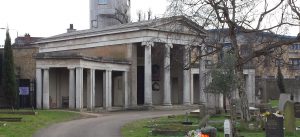
A unique identifier of this style is that the columns have a smooth or fluted surface. Atop the columns are round shaped pilasters, also known as capitals that help in bearing the weight of the structure.
The Dissenters chapel, listed as Grade II was built in Greek Revival style. The chapel was built using Portland stone. This chapel features Ionic order. In this style, the capital of the column is volutes shaped.
In other words, it looks like an open scroll with spirals on both ends. There are brick vaulted catacombs beneath these chapels. The cemetery has Mausoleums, built by the royals and rich class for their loved ones.
b. Other Victorian Cemeteries
Apart from the above-mentioned cemetery, Pre-Victorian period comprises two Victorian Cemeteries, namely- The Cross Bone Graveyard and the Bunhills Field Cemetery.
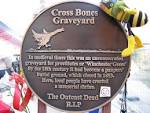
While the earlier cemetery was a post-medieval graveyard that was opened to bury orphans, beggars, prostitutes, destitute, etc., the latter one was a 17th-century non-conformist burial place.
2. Victorian Era Cemeteries
This period saw a massive change in the manner in which people buried their deceased loved ones. Most of the private Victorian Cemeteries which form a part of the Magnificent Seven were built during the Victorian times.
It was an era when people spent enormous amounts on building monuments and tombs for the departed. Listed below are some of the cemeteries that were built during this period.
a. West Norwood Cemetery (1837)
This is a garden cemetery which gets its name after the locality in which it was built. It has been designed by Sir William Tite. The cemetery houses Greek Orthodox necropolis that comprises of monuments and mausoleums.
These structures have been built in Neo-classical architecture. The Necropolis (Greek cemetery) was started by Greek settlers around 1842.
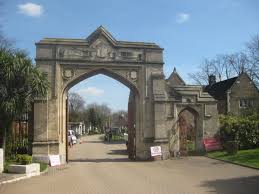
There also exists a Greek chapel built during the 1800s. The cemetery is home to structures with Gothic Revival architectural style. Many structures found within this cemetery have been listed as Grade II.
The West Norwood cemetery has two chapels- Anglican and Dissenters. The construction of these chapels displays Gothic architecture. Catacombs have been built underneath the chapels.
b. Highgate Cemetery (1839)
This cemetery has been regarded as the best cemetery amongst the list of Magnificent Seven. It is popular for its Gothic style influenced garden cemetery. Gothic architectural style can be predominantly seen here. Even tombs and graveyards have been built in Gothic style.
Cemetery comprises some buildings and mausoleums that are listed as Grade I structures. This cemetery houses several memorials. The cemetery has been divided into East and West Cemetery.
West Cemetery has been known for its funerary architectural variations. It comprises of a chapel where funerals were conducted in the past. Even today, funerals are held in the chapel.
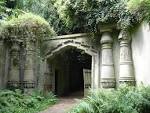
Apart from the above, this cemetery also houses Egyptian Avenue that gives a glimpse of the ancient Egyptian world. One can find structures and tombs built in Egyptian architectural style.
A unique feature of the cemetery is the terrace catacombs that were constructed using bricks, cast iron as well as traceried terrace balustrade. The Egyptian Avenue and the Cedar of Lebanon have family vaults comprising of lotus flower columns and obelisks.
The East Cemetery section is popular as the resting place of eminent personalities of the 19th and 20th century.
c. Brompton Cemetery (1839)
This cemetery is regarded as the oldest and the most unique of all garden Victorian Cemeteries. A portion of the cemetery has been dedicated as Military Cemetery wherein troops who fought the World Wars have been buried.
Brompton Cemetery has been built in the Neo-classical architectural style and is managed by Royal Park. It has been built in a symmetrical manner. The entrance of the cemetery has been constructed using white stock bricks.
At the north gate is an arch (triumphal) made from stone. Also found, is the Central Avenue that begins from the gate and stretches right up to the center of the cemetery.
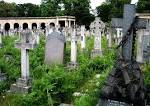
The cemetery saw a lot of developments unfold over the period of time. For example, mausoleums designed in Classic Victorian and Egyptian style came up. Further, one can find obelisks and Gothic shrines, typical features of Victorian architecture.
The cemetery also houses an interesting monument of Frederick Leyland, an art patron. This monument was built in Romanesque marble shrine. There are bronze scrolls to support the weight of the shrine. The slope of the monument’s roof was built with copper to ensure durability.
Apart from these, there is chapel and Colonnades, which are listed as Grade I structures. The chapel is situated in the center of the cemetery. It is a dome-shaped chapel and its architecture is believed to have been influenced by St Peter’s Basilica or piazza, found in Rome.
The Colonnades or pillared columns were built atop several rows of catacombs. There are tombs in the cemetery on which symbols like obelisks (ancient Egyptian symbol representing death), angels, cross, etc., can be seen.
d. Abney Park Cemetery (1840)
It is yet another Victorian-era garden cemetery established at Stoke Newington High Street. A unique feature of this cemetery is that it is nondenominational. In other words, the cemetery is not built specifically for any particular religion.
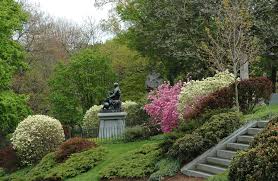
This one of its kind cemeteries drew its inspiration from Mount Auburn Cemetery, Massachusetts, USA. Several species of trees spanning across a vast area call this cemetery their home.
The entrance of the cemetery has been built in Egyptian Revival style. This style focuses on capturing ancient Egyptian designs, some form of artistic work, etc. The entrance was designed by William Hosking and built by John Jay.
At the center of the cemetery is one chapel. It was earlier used as a funerary chapel and built in Gothic Revival. It was again designed by William Hosking and built by John Jay. Gothic Revival style was in not vogue during the Victorian period and thus, was subjected to criticism by a few.
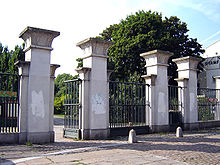
The architecture of the chapel had some interesting features. The windows are tall and arch-shaped (pointed), a typical Gothic architecture style. The chapel was built using London Yellow Stock brick. It also has wrought Bath Stone facings.
There is a winding wooden staircase to reach the top. Another feature of the chapel is the ten-part rose stained windows. The chapel has been built in such a manner that there appears to be crucifixion cross at the bottom and the chapel has been placed on top of that.
The arms of the cruciform are equal in length and it is also known as the Greek Cross. The church steeple comprising of tower and spire is the tallest in the locality (120 ft) and is octagonal and cross-section in shape.
e. Nunhead Cemetery(1840)
Apart from the above-mentioned cemeteries, Nunhead Cemetery is also part of the Magnificent Seven. At the cemetery is a granite obelisk dedicated to the Scottish Martyrs who were sent to Australia in the 18th century on sedition charges.
Also found here are monuments like weeping angels and lion’s head on memorials. Close to the chapel is another monument that has a draped urn placed at the top. Urns were Victorian symbols. There was also a chapel which had remained closed for several years.

It was re-opened recently in 2001 after certain restorations were made. Along with these, there are Gothic tombs in the cemetery. There is an Anglican chapel that was built in 1844 in Gothic Revival style. Catacombs can be found underneath the chapel.
There are decorated memorials at the Victorian Cemeteries. These decorated memorials signify burial of members belonging to rich families. Also found here is Little Monument dedicated to Boys Scout, who was a group of teenagers who drowned at sea.
f. Tower Hamlets(1841)
The last of the Magnificent Seven is Tower Hamlets. Here locals, as well as people who would drown at sea, were buried here. The cemetery had two chapels-Anglican and Dissenters. An Anglican chapel had a bell tower attached to it and its windows were well ornamented.
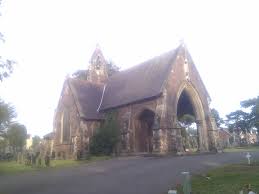
Dissenters chapel was built in Byzantine architectural style and in an octagonal shape. However, both chapels suffered severe damage during the Second World War bombings and as a result, and so were later on pulled down.
The cemetery is also home to some interesting Victorian era carvings on the tombstones. These include draped urns, clasped hand, broken bud, angels, etc. All of these carvings are symbolic of death and the afterlife.
g. Other Victorian Era Cemeteries
The Victorian Cemeteries built as part of the Magnificent Seven had paved the way for decent burials to the deceased. However, apart from these cemeteries, there were other Victorian Cemeteries that were established during this period.
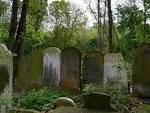
These include Arnos Vale cemetery in Bristol, Brookwood Cemetery situated in Surrey and Hyde Park pet cemetery which was established in the late Victorian and early Edwardian period.
3. Post-Victorian (Edwardian) Cemeteries
The Victorian period in a way brought about a revolution in every aspect. Even after the end of the Victorian era, its influence could be seen for ages to come. There was hardly any deviation from the norms that were set by Queen Victoria.
During the early 20th century, Greek, Roman and Egyptian symbols were used over the tombs as it was like during the Victorian times.
More Info On- Famous Victorian Portraits, Colloquialism, Writing Style in the Victorian Era, Period Derby Day